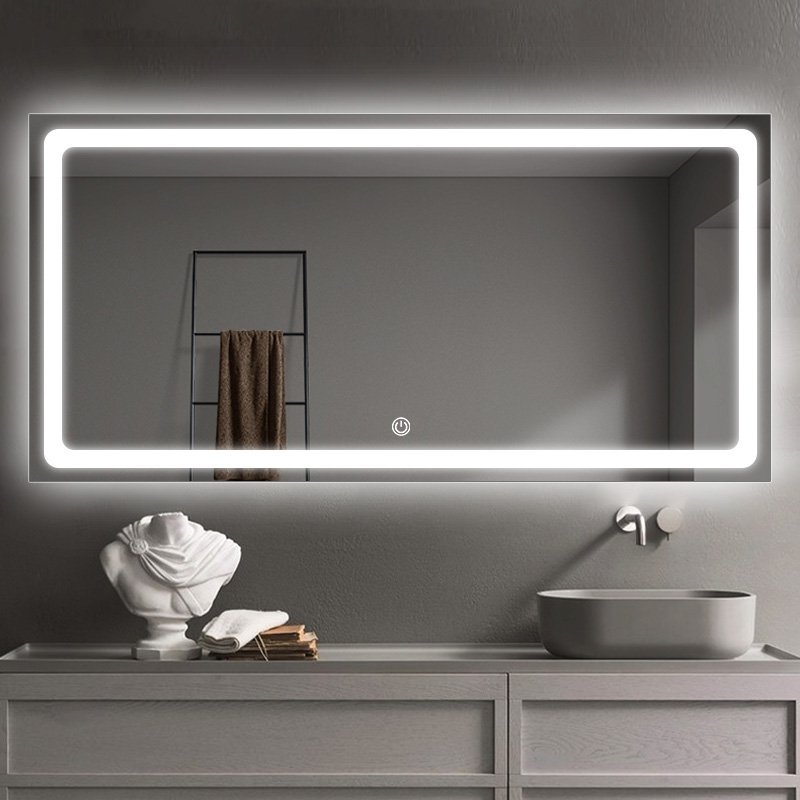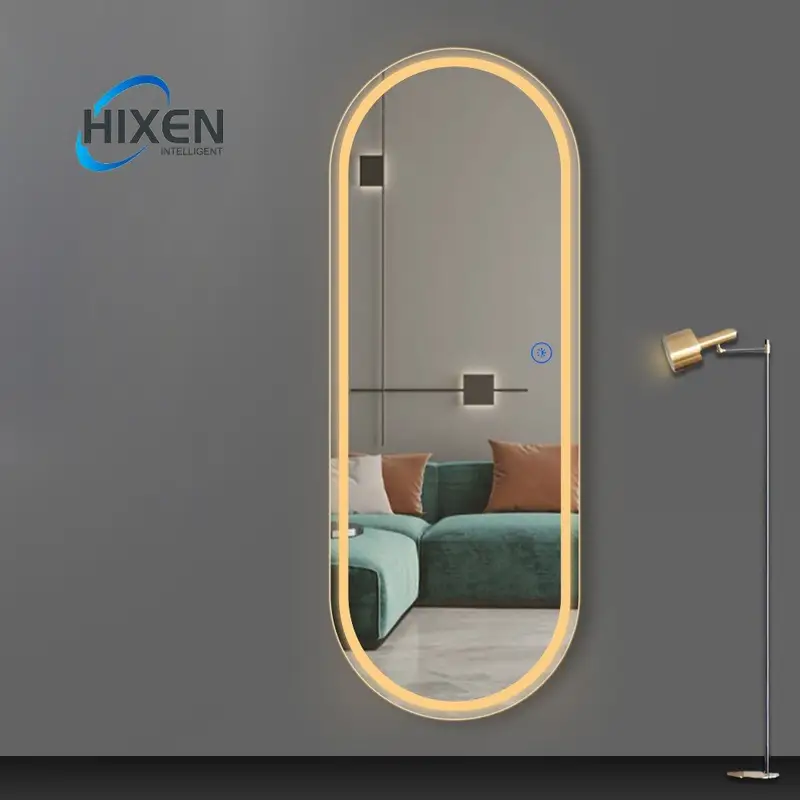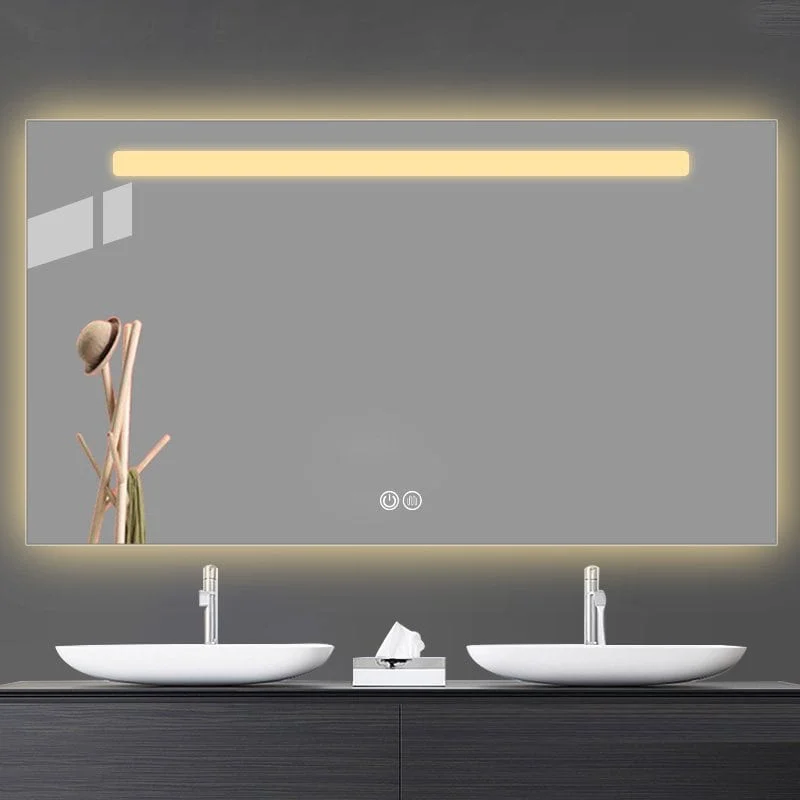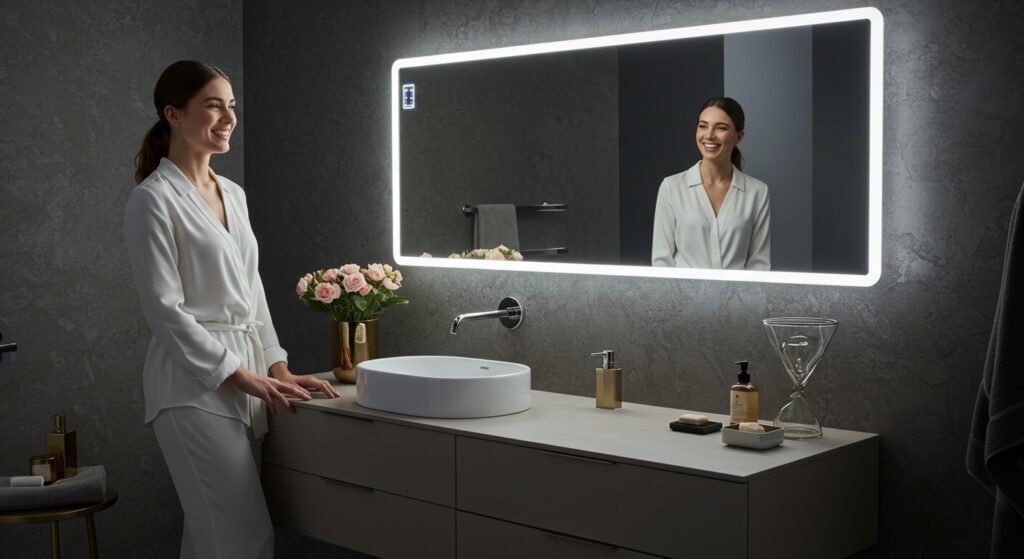|
Mendapatkan Anda Audio Trinity pemain siap ...
|
What Is The Best Way To Clean Mirrors? Streaky mirrors instantly diminish the elegance of any space, whether it’s your modern bathroom mirror or lighted vanity mirror. These unsightly marks frustrate homeowners and business owners alike, creating an unprofessional appearance that reflects poorly on your attention to detail.
The best way to clean mirrors without streaks involves using distilled water mixed with white vinegar in a 1:1 ratio, applied with a microfiber cloth in circular motions followed by vertical strokes. This method works effectively on all mirror types, including led bathroom mirrors, cermin backlit, and traditional glass mirrors.
Understanding proper mirror cleaning techniques ensures your bathroom vanity mirrors and lighted makeup mirrors maintain their crystal-clear appearance for years to come.

What Should You Not Clean Mirrors With?
Avoid using ammonia-based or acidic cleaning products on your mirrors, as these can permanently damage the reflective coating. Stick to gentle, non-abrasive cleaners and microfiber cloths to protect your mirrors and keep them looking their best.
Never use abrasive cleaners, paper towels, newspaper, or ammonia-based products on mirrors. These materials can scratch the surface, damage protective coatings, or leave residue that creates persistent streaking problems.
Paper towels and newspaper, despite popular belief, leave lint and can scratch delicate mirror surfaces. Abrasive cleaners containing bleach or harsh chemicals can damage the silver backing of traditional mirrors and potentially harm the electrical components in led vanity mirrors. Ammonia-based or acidic products are bad for your mirrors. They can eat away the silvery backing on the mirror and cause permanent damage. Ultimately, as long as you keep chemicals off the progressive lenses and the frames, your mirrors will serve you well for a long time.
How Do You Remove Buildup from a Mirror?
To remove heavy buildup on lighted bathroom mirrors, as well as around bathroom vanity lights areas, without damaging it, use a step-by-step process. Pertama, when I talk about heavy buildup, we’re typically going to have soap scum, hard water deposits, and cosmetic residue.
Create a paste using baking soda and water, apply gently with a soft cloth, then rinse with distilled water and dry with a clean microfiber cloth. This method safely removes stubborn buildup without scratching.
You’ll need to use specific procedures depending on the type of buildup. If you have hard water spots, mix equal parts of white vinegar with distilled water. Apply the mixture with a soft cloth, let it sit for a few minutes, then gently scrub. If you have soap scum, you’d create a mixture of dish soap with warm water. You would apply that to the mirror, and then you would want to rinse it thoroughly.
For cosmetic residue on lighted makeup mirrors, isopropyl alcohol on a microfiber cloth effectively dissolves oils and makeup without leaving streaks. When dealing with rectangular bathroom mirrors or mirrors with black frame designs, pay special attention to corners and edges where buildup tends to accumulate. Always work from top to bottom to prevent dripping onto cleaned areas, and ensure LED components remain dry during the cleaning process.

Why Are My Mirrors Smeared After Cleaning?
For standard bathroom mirrors, it’s not as critical. Wide vanity mirrors, and especially lighted mirrors, tend to show those streaks and smears more. Post cleaning issues on mirrors are going to be typically related to one of several things: Number one, it might be your technique. You may not be using the right type of material to clean the mirror. It could be environmental.
Smearing typically occurs due to using dirty cloths, cleaning in direct sunlight, or applying too much cleaning solution. The solution involves using clean microfiber cloths, working in shaded areas, and applying minimal cleaning product.
The most common cause of smearing involves using contaminated cleaning cloths that redistribute dirt and oils across the mirror surface. When cleaning led light mirror vanity setups or light up vanity mirrors, fabric softener residue on cloths can create persistent streaking. Temperature and humidity also play crucial roles in cleaning effectiveness. Cleaning mirrors in direct sunlight or high humidity causes cleaning solutions to dry too quickly, leaving residue behind.
For backlit mirrors and modern bathroom mirrors, the heat generated by LED components can accelerate solution evaporation, creating smears. The amount of cleaning solution applied significantly impacts results. If you usetoo much product,now youhave this thick film that’s hard to completely remove from the mirror. If you don’t use enough, you don’t get all of thescum and stuff that you’re trying to dissolve from the surfacein the first place.Less is more with regard to your technique according toprofessionals that clean for a living.
How Do You Get Haze Off a Mirror?
Hazy bathroom mirrors, whether they’re lighted mirrors, a lighted vanity mirror, or a standard mirror, typically happen for one of a few reasons. Pertama, there could be a buildup of product or residue on the mirror. Second, if you have a mirror in your bathroom, and it’s constantly exposed to steam, the coating on the back of the mirror could be deteriorating and starting to flake.
Remove haze by cleaning with a solution of one part white vinegar to one part distilled water, followed by polishing with a dry microfiber cloth using circular motions. For persistent haze, repeat the process using isopropyl alcohol.
| Haze Type | Cause | Best Solution | Application Method |
|---|---|---|---|
| Surface Film | Soap residue, hard water | Vinegar solution | Spray, wipe circular, then vertical |
| Deep Haze | Moisture penetration | Isopropyl alcohol | Apply with cloth, buff dry |
| Age-related | Mirror backing deterioration | Professional assessment | May require replacement |
| Chemical Damage | Wrong cleaning products | Gentle restoration | Multiple gentle cleaning cycles |
In today’s age, if you have a lighted mirror in your bathroom and it’s hazy all the time, you have a problem. It’s most likely moisture’s gotten in behind the backing of the mirror, and that’s where the cloudiness is coming from. There’s no way to clean that off because it’s permanent. I see this a lot in high-humidity areas where there’s a ton of moisture followed by a lot of heat. For led mirrors and backlit mirrors, you can also end up with electronic components creating patterns that look like haziness or clouding when it’s not the mirror at all.
When dealing with room mirror ideas that include large installations, environmental factors like poor ventilation exacerbate haze formation. Prevention strategies include ensuring adequate bathroom ventilation, maintaining consistent temperatures, and avoiding moisture contact with mirror edges. For valuable installations like wall mirrors with lights or custom rectangular bathroom mirrors, professional assessment may be necessary to determine whether restoration or replacement provides the most cost-effective solution.

Is Windex OK for Mirrors?
A generous spritz of Windex across the glass usually does the trick to get it clean. But remember, some types of mirrors, especially led vanity mirrors and other electronic mirror installations, you might not want to do that.
Windex is generally safe for standard glass mirrors but may leave streaks and contains ammonia that can potentially damage specialized coatings on modern mirrors. Distilled water and vinegar solutions often provide superior results with fewer risks.
While Windex effectively removes common dirt and grime from bathroom mirrors and vanity lights areas, its ammonia content can react adversely with certain mirror coatings and LED components. Itu product’s formulation includes surfactants and solvents that, while effective for cleaning, can leave behind residues that create streaking, particularly on lighted bathroom mirrors where heat from LED elements accelerates evaporation. For mirrors with black frames or specialized finishes, commercial cleaners may cause discoloration or coating damage over time.
Professional cleaning services increasingly recommend avoiding ammonia-based products for high-end installations like modern bathroom mirrors and backlit mirror systems. Windex can streak, and it can also contain ammonia, which can have a negative impact on different coatings that might be present on mirrors. Additionally, free homemade glass cleaner is generally less expensive than commercial products, and it tops the performance of commercial glass cleaners. Whether you’re doing standard bathroom mirrors, big led bathroom mirrors, or other electronic mirrors, when you’re cleaning on a regular basis, you probably don’t want to be using commercial glass cleaner.
How to Clean a Mirror That Is Hazy
If the surface is contaminated, you would clean it. Namun, if the problem is deeper, you have to address that issue specifically. You tend to see this a lot with led vanity mirrors and lighted vanity mirrors in a bathroom environment where there is constant exposure to steam and other things.
Begin with a thorough cleaning using isopropyl alcohol, followed by a vinegar solution treatment, then finish with distilled water rinsing and microfiber cloth polishing. Multiple treatments may be necessary for complete restoration.
| Cleaning Stage | Larutan | Tools Required | Expected Results |
|---|---|---|---|
| Initial Assessment | Visual inspection | Good lighting | Identify haze severity |
| Deep Cleaning | 70% isopropyl alcohol | Microfiber cloths | Remove embedded residue |
| Residue Removal | Vinegar and distilled water | Spray bottle, cloths | Eliminate mineral deposits |
| Final Polish | Distilled water only | Clean microfiber | Achieve streak-free finish |
Restoration of hazy led bathroom mirrors and modern lighted mirrors for bathrooms requires patience and proper technique. Start by ensuring the mirror and surrounding lighted vanity mirror components are completely dry and electrical systems are safely disconnected if possible. Apply isopropyl alcohol using a clean microfiber cloth in overlapping circular motions, working systematically across the entire surface. This initial treatment dissolves oils, cosmetic residues, and other organic contaminants that contribute to haziness.
Use a white vinegar solution (equal parts white vinegar and distilled water) for any mineral deposits or hard water stains that have formed on the mirror. This can also occur in a high-moisture environment like a bathroom. Lagi, exercise caution if you have anything electric or there’s electrical integration with your mirror. Be sure to let it completely and thoroughly dry between each of these stages before you move to the next. Follow up with the distilled water to give you that final polish to get everything off. If you’re using a backlit mirror setup, a bathroom light or backlit bathroom mirror, that’s going to give you that crystal-clear finish that you expect in those types of electronic mirror systems.

How to Clean Mirrors Without Vinegar
Alternative cleaning methods accommodate individuals with vinegar sensitivities or preferences while maintaining effective results on all mirror types, from led mirrors to traditional glass mirrors.
Mix equal parts distilled water and isopropyl alcohol, or create a solution using liquid dish soap and distilled water. Both alternatives provide excellent cleaning power without vinegar’s distinctive odor or potential sensitivity issues.
For those seeking vinegar alternatives, several effective solutions deliver professional results on bathroom mirrors and lighted makeup mirrors. The alcohol-based solution works particularly well on modern bathroom mirrors and wall mirrors with lights, as isopropyl alcohol evaporates quickly and leaves no residue. This characteristic makes it ideal for cleaning around sensitive electronic components in led vanity mirrors and lighted bathroom mirrors.
A dish soap solution, using just a few drops of high-quality liquid dish soap in distilled water, effectively removes oils and cosmetic residues from vanity mirror with led lights installations. This gentle approach suits delicate surfaces and provides excellent cleaning power for small bathroom mirror maintenance and large bathroom vanity mirrors alike.
Commercial glass cleaners specifically formulated without ammonia offer another alternative, though homemade solutions typically provide better cost-effectiveness and environmental benefits. For room mirror ideas incorporating multiple mirror installations, consistency in cleaning methods ensures uniform results across all surfaces, whether dealing with mirrors with black frame designs or backlit mirror systems with complex lighting configurations.
How to Clean a Mirror Without Glass Cleaner
Household items can effectively clean mirrors when commercial products are unavailable, providing excellent results for led bathroom mirrors and other specialized mirror types through simple, accessible solutions.
Combine distilled water with liquid dish soap, or use plain distilled water with newspaper alternatives like coffee filters or lint-free cloths. These methods achieve professional-quality results using common household materials.
Emergency mirror cleaning situations often arise when maintaining lighted vanity mirrors for bathroom use or cleaning bathroom vanity lights areas without access to specialized products. Distilled water alone can remove light dust and fingerprints from modern lighted mirrors for bathrooms, particularly when applied with high-quality microfiber cloths.
For more substantial cleaning needs on light up vanity mirrors and rectangular bathroom mirrors, adding a small amount of liquid dish soap creates an effective cleaning solution that rivals commercial products. The key lies in using minimal soap to prevent residue formation that could create streaking on backlit mirrors and led light mirror vanity installations.
Coffee filters serve as excellent alternatives to paper towels for drying, as they leave no lint and create streak-free finishes on bathroom light mirrors and modern bathroom mirror surfaces. Cotton swabs dipped in distilled water effectively clean corners and edges around vanity lights and mirrors with black frame details where buildup commonly accumulates. This approach proves particularly valuable for maintaining wall mirrors with lights and other complex installations where commercial cleaners might damage electronic components or specialized finishes.

Kesimpulan
Achieving streak-free mirrors requires proper technique, appropriate materials, and understanding of your specific mirror type. Whether maintaining led bathroom mirrors, traditional glass mirrors, or modern lighted vanity installations, consistent application of these professional methods ensures optimal clarity and longevity for your investment.
- Untuk mempelajari cara memilih cermin kamar mandi yang tepat klik di sini.
- Untuk mempelajari cara memasang cermin pilih di sini.
- Untuk mempelajari cara memilih cermin ukuran yang tepat klik di sini.
- Untuk mempelajari bagaimana cermin dibuat klik di sini.
- Klik di sini dan Anda akan mengetahui mengapa kami terlihat lebih baik di depan cermin.
- Klik di sini Anda akan belajar tentang TOP 10 produsen cermin led untuk 2024.
- Klik di sini untuk mengetahui Mengapa lampu cermin rias saya tidak menyala?
- Cari Tahu Berapa Tinggi Seharusnya Cermin Kamar Mandi? Klik disini
- Klik di sini jika Anda tidak tahu cara membersihkan cermin Anda
- Untuk mengetahui cara memperbaiki Cermin Sensor Sentuh Tidak Berfungsi klik di sini
- Mengetahui 10 Masalah Umum Cermin Kamar Mandi LED Klik Disini

























